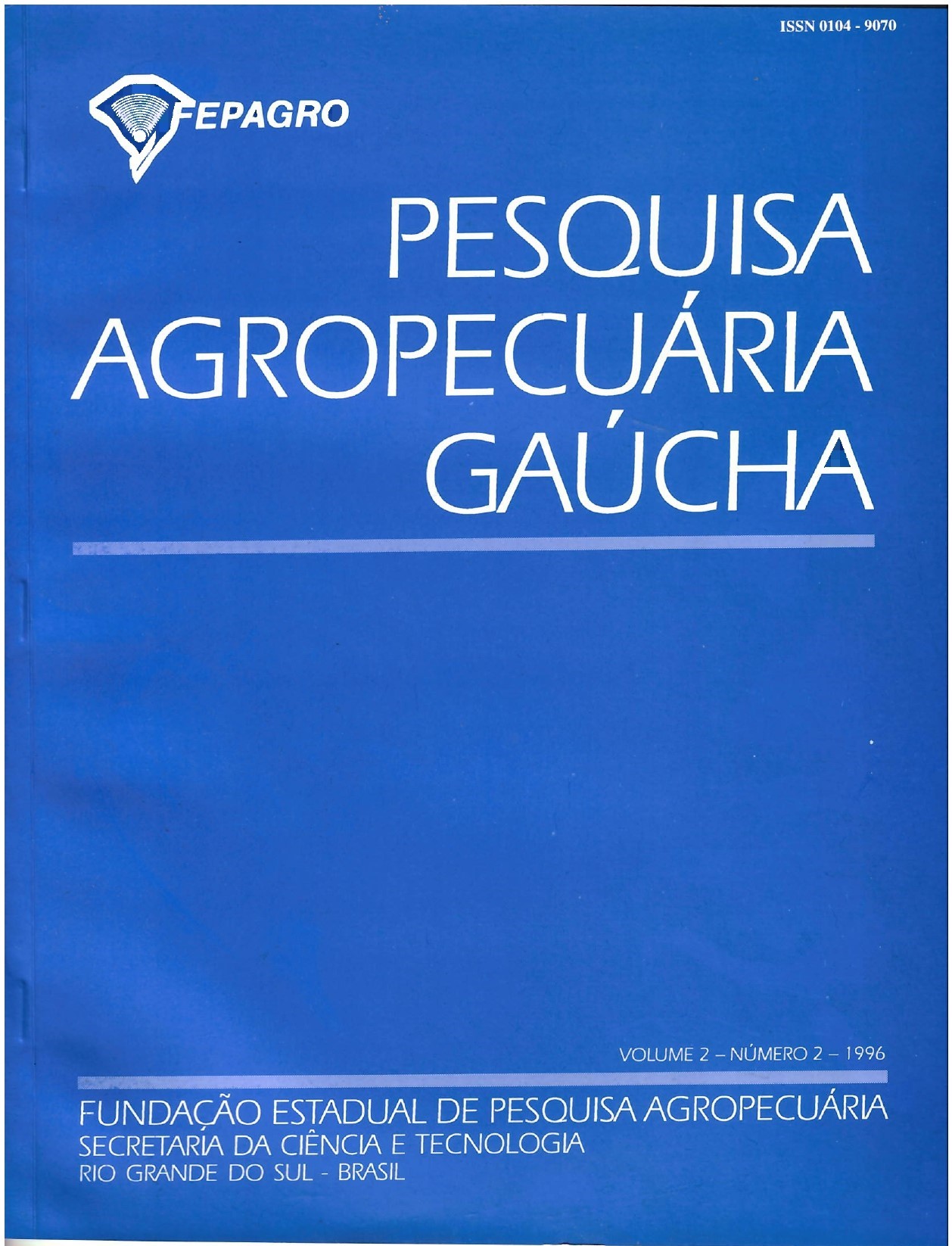GENETIC IMPROYEMENT OF SOYBEANS IN THE RIO GRANDE DO SUL STATE: I. GRAIN YIELD
Abstract
Experimento were carried out at the Seeds Research Center of Júlio de Castilhos (RS) from September of 1993 to May of 1994 to evaluate the progress in grain yield due to the soybean breeding programo in Rio Grande do Sul state, under three environmental conditions related to soil and crop management. The treatments included 21 soybean cultivars from different eras, chosen by their yield potential and their percentage of use by the soybean growers. The resulto show high progress in grain yield for the last 40 years.The genetic gain was 19 kg/ha/year or 1.1% per year, rangin g from 14.7 to 25.3 kg/ . ha annually, within every environment. When the cultivar 'Amarela Comum' was excluded the gain was 11.7 kg/ha/year, for a 30 years period. However, the grain yield gain hes been decreasing along the years probably because the soybean cultivars have reached high productivity levei and also because there has been constant use of the same germplasm bank for hybridization, creating a genetic narrow base. With emergente of new dioceses in the last decade, there were great changes on soybean varieties preferente, changing from varieties derived from Hill and Hood cultivars to genotypes originated from Davis cultivar. The changing was driven by resistancc to brown stem rot (Phialophora gregata). The great difference in grain yield among environments was due to better use of tecnology on soil and crop tillage.
Downloads
The authors declare that the work has not been previously published, nor sent simultaneously for publication in another journal and that they agree with the submission, content and transfer of the publication rights of the article in question to the scientific journal Pesquisa Agropecuária Gaúcha - PAG. The authors assume full responsibility for the originality of the article, and may incur on them any charges arising from claims by third parties in relation to the authorship of the article. The full reproduction of the journal's articles in other free-to-use electronic media is permitted under the Creative Commons Attribution-NonCommercial-ShareAlike 4.0 International license.



















